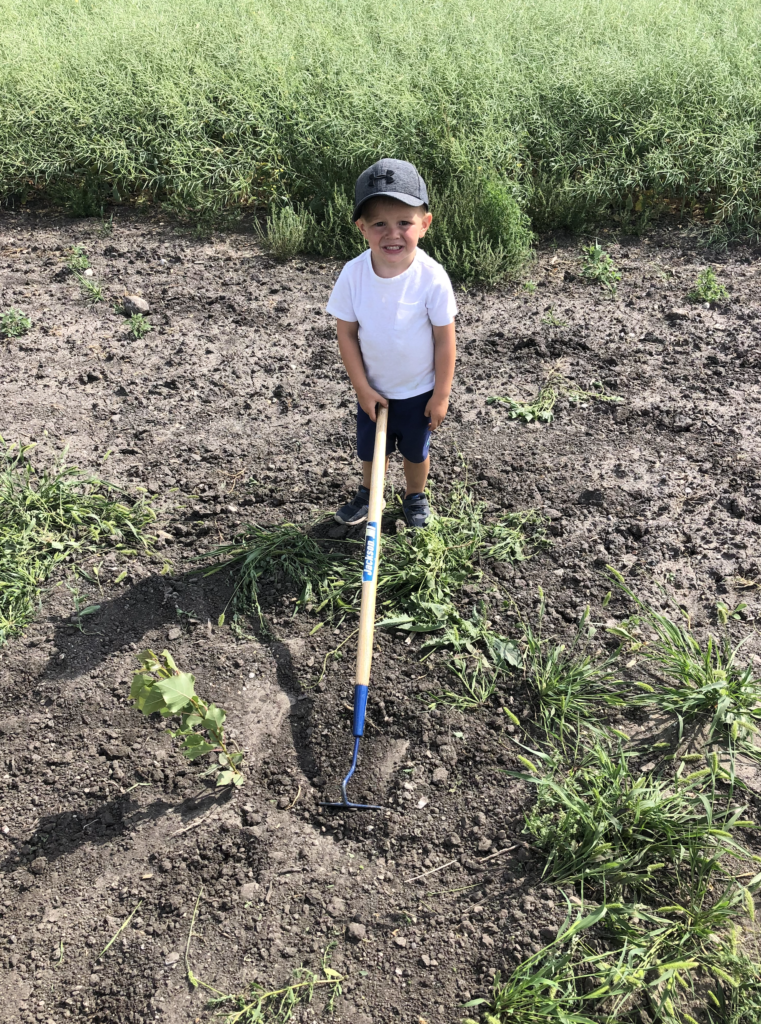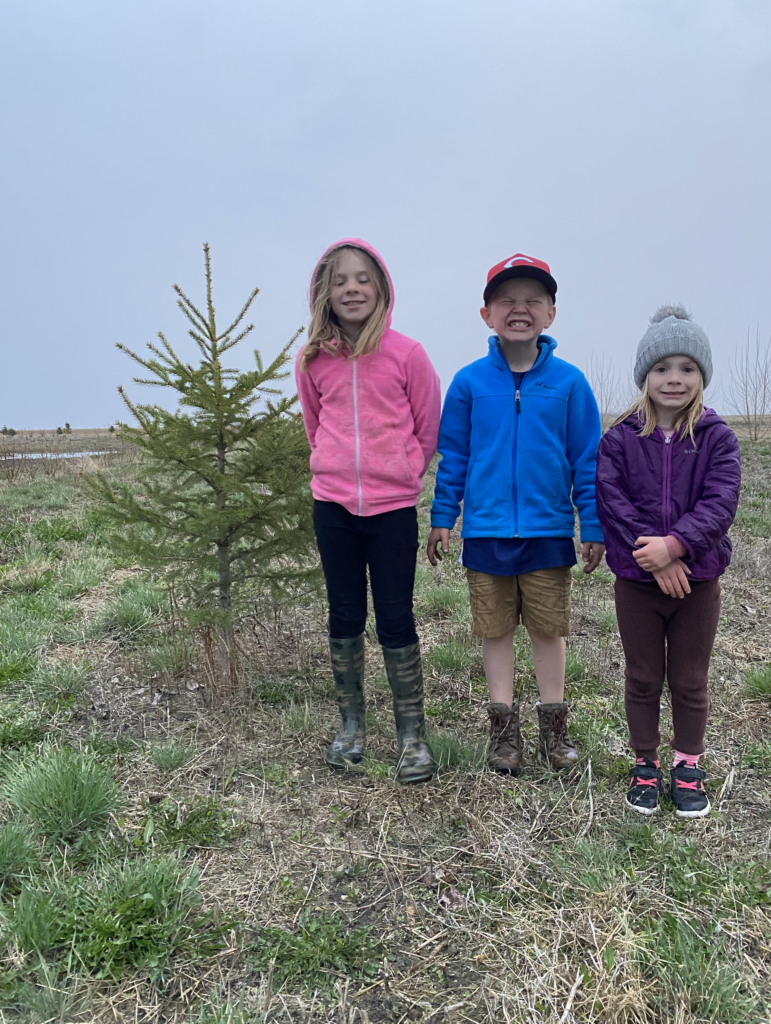
Planning a Generational Farm: Shelter belt
A shelterbelt is a barrier of trees and shrubs that provides protection (as for crops) from wind and storm and lessens erosion. – Mirriam Webster Dictionary
My husband, Scott, and I have been dreaming of building a custom, family, legacy home for 10+ years. We currently live in a beautiful location but it just seems too far from the main family farm. The main farm is the hub of everything that happens. The heated shop is located there, where much of the mechanical work and maintenance is completed through the winter months and equipment is stored. This is also where the bin pad and grain dryer are. Most farm tasks begin from this location year round. As my 3 children get older, we all want to have more access to dad, as well as share our heritage and farm lifestyle.
We would like to live closer to the main farm yard to make this dream a reality. We are not prepared to build our home at this time but knew we could be planting trees. Planting trees years before building means there may be an established shelter when the time comes to build our dream home in Southwest Manitoba.
Our Home and Acreage Accessibility
We are blessed with the opportunity to start our future yard, ¼ mile South of the family farm. We had to decide where we wanted our lane to be, how long it would be, what side of the yard it would enter on. To be honest, we came up with a plan, and after seeing it, I changed my mind and knew more privacy would be ideal. We are in the process of changing it. Thankfully, Scott has an idea of how to re-grade the yard site for water run-off with my new layout in mind.
We chose to do a rectangular yard, envisioning our home to the Northern centre of the space. I love the look of an L shaped home. This ideal layout keeps the garage doors away from the front entry door, but guests still do not have to walk far to the entry when parking on the front drive. One tricky factor in planting trees before our home plan had been drawn up was deciding how large to make our future yard.
We have a long way to come for a floor plan. There’s certainly ideas and a general plan in mind, but nothing has been finalized.
The Trees We Chose
In Southern Manitoba, we were able to order trees from a local watershed district. They run programs and offer an affordable price on bundles of trees. Going this route, it was necessary to plant them ourselves and pick them up from the municipality. They were delivered in bundles, in a plastic bag and a small amount of dirt and water around the roots.
We have 5 rows of trees, and 6 along the West and North. With the prevailing winds from the West and North we decided to do an additional exterior row of Willow trees. The species we chose for the second row is a hybrid poplar. These deciduous trees are known to be quick growing. This was important to us, because the middle 2 rows are White Spruce. White Spruce are slow growing but provide unbelievable shelter year round and for decades. The White Spruce we did not purchase through the watershed district, but through a private company. Next we have a row of Ash, that are still to be planted.
On the interior of the yard, we chose to do the whole perimeter with a hedge of lilacs. The lilacs take me back to my childhood farm, as there was gorgeous blooming lavender shaded lilacs surrounding the side and exterior of our family home. I looked forward to trimmings of the flowers and presenting them to my mom in spring.
We chose an array of different trees to protect our yard site of our future farm home. Each provides a different form of shelter from wind, storms, wild life and dust from the busy, adjacent roadway. It is a lot of work taking care of the trees when we don’t live there. In the dry years, Scott would go out with the water truck to water the 900 trees planted, and he also mows between the rows as the weeds get out of hand.
When planning your new yard, whether rural or suburban, consider the longevity of the species, the shade your hoping for, and the height and width of your ideal species. Happy planting!













